I have been visiting the wreck of the Santiago in the North Arm of the Port River on many of my kayaking trips from Garden Island. There is always much interest from kayakers in the wreck, possibly due to the large size of the rusting iron hull. It is also the closest wreck in the North Arm to the Garden Island boat ramp where most kayakers launch from.
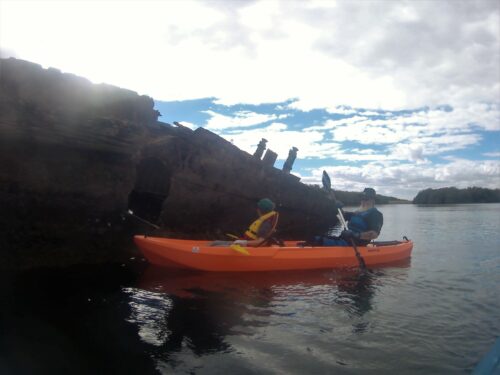
Snorkellers and kayakers are known to enter the Santiago through a hole in the hull and inspect the inside of the wreck.
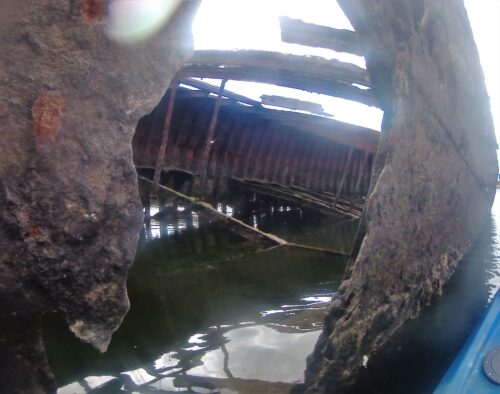
The Santiago is the largest vessel in the graveyard. It was a 3-masted iron barque, and it is thought to be the oldest iron sailing ship in existence.
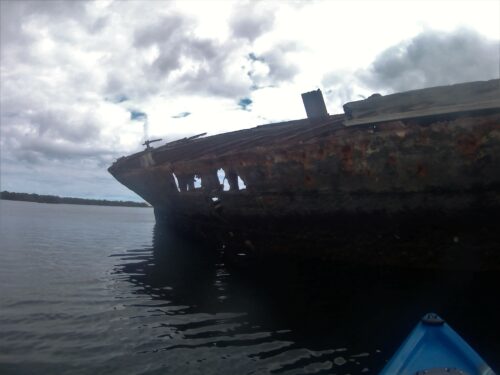
Maritime experts visited the Santiago wreck in the Garden Island Ships’ Graveyard in 1995 (the 50th anniversary of the vessel being abandoned there in 1945). They included SA maritime archaeologist, Bill Jeffery, Peter Kentish, and Christine Watson & Paul Bedwell from the UK. Paul was a member of the UK’s National Historic Ship Committee at the time.

They were attempting to preserve the vessel from corrosion. Sacrificial anodes were fixed to the vessel below the waterline and a rust-inhibiting, protective paint was applied to the upper part of the hull to test the results.
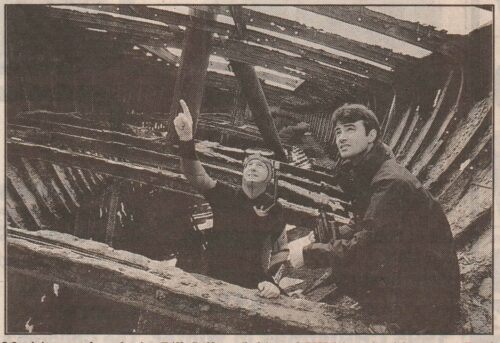
Here is a larger 3-masted barque similar to the Santiago, showing just how the Santiago may have looked in its early days: –
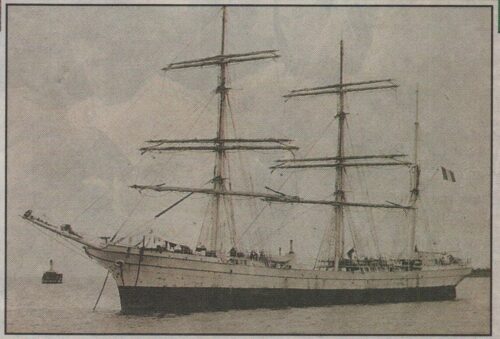
Built in Scotland in 1856, the Santiago was a coal hulk in 1901. When later taken over by the Adelaide Steam Tug Company, it assisted with the salvage of stranded vessels.
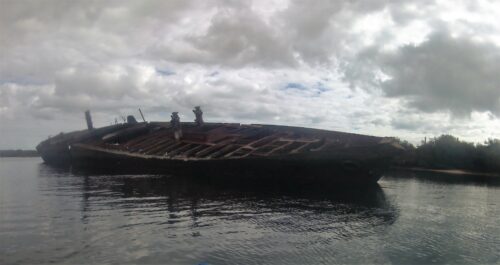
The other large vessel close to the Santiago in the North Arm of the Port River is the Dorothy H Sterling. I wrote about the Dorothy H Sterling in my article titled “The Schooner Dorothy H Sterling (and other ships associated with her)” in the June 2008 MLSSA newsletter. The Dorothy H. Sterling (formerly Oregon Pine) was a six-masted wooden schooner built in 1920 by the Peninsula Shipping Company of Portland, Oregon, USA. It was abandoned in the Garden Island Ships’ Graveyard in 1932. Nicole Cama from the Australian National Maritime Museum used my work towards her article titled Death of a shipping line: The rise and fall of the Sterlings
UPDATE: The SAAS (as SUHR) did some work on the Santiago in 1978, as reported in ‘Project: Santiago’ by Jeffery, W.F., SUHR Annual Report 1978, pages 8-9.
“Garden Island Ships’ Graveyard” states “(Santiago) assisted … salvage of …. Willyama at Port Lincoln in 1909” even though the Willyama sank at Marion Bay in 1907.

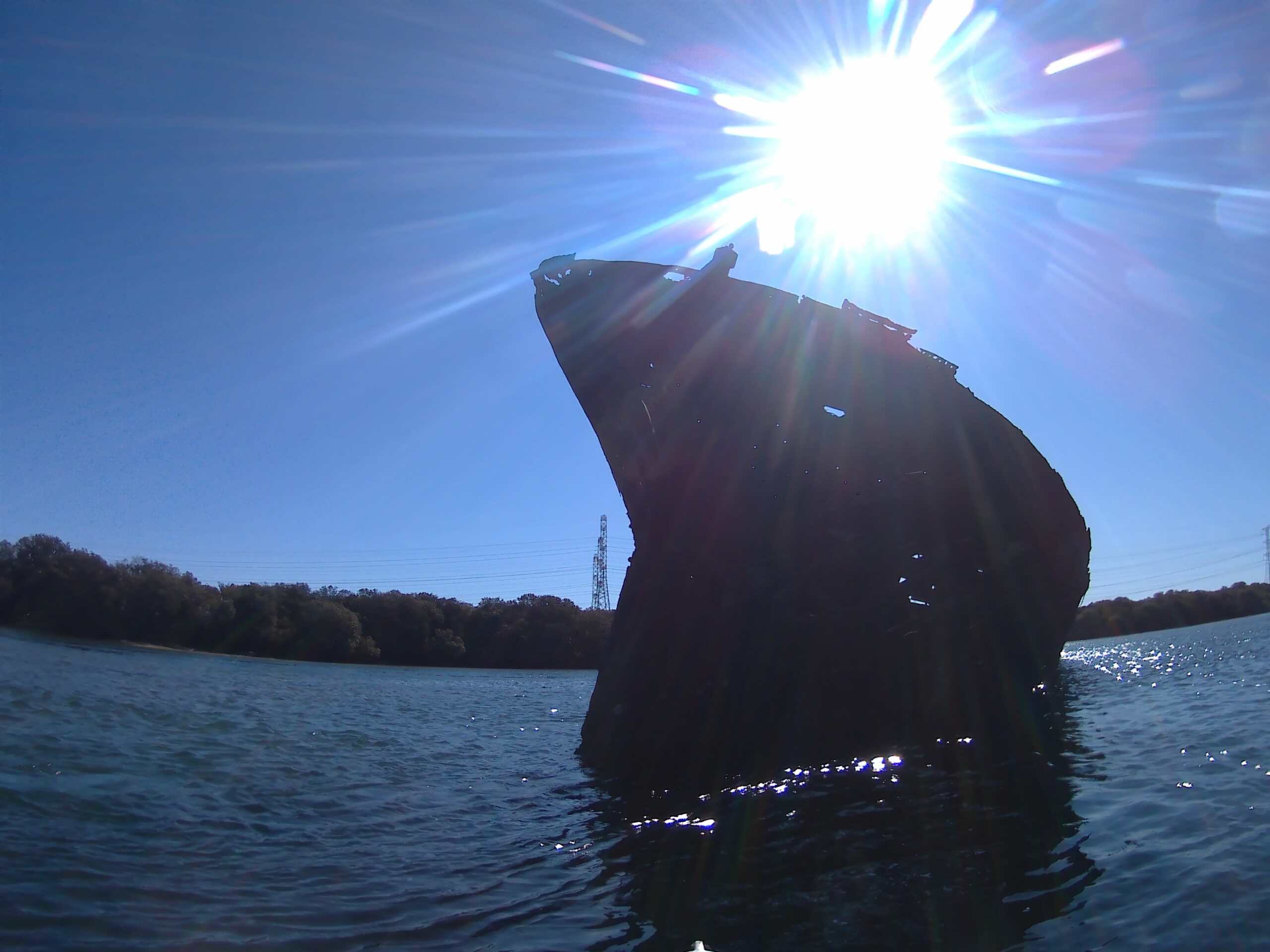
[…] have revisited the wreck of the Santiago several times since writing The Rusting Wreck of the Santiago last November, mostly by kayak. My most recent visit, however, included a snorkel inside the wreck. […]
[…] reported in The Rusting Wreck of the Santiago , “Maritime experts visited the Santiago wreck in the Garden Island Ships’ Graveyard in 1995 […]